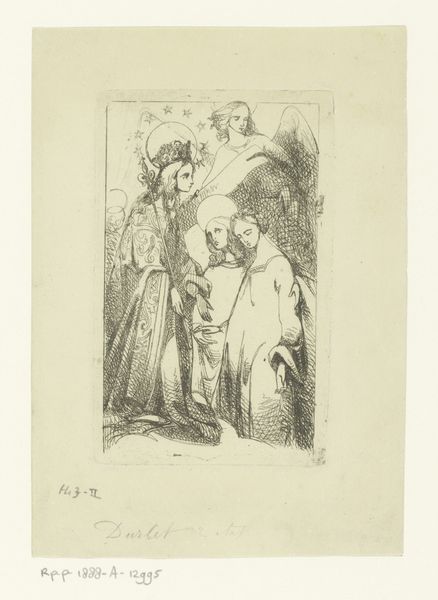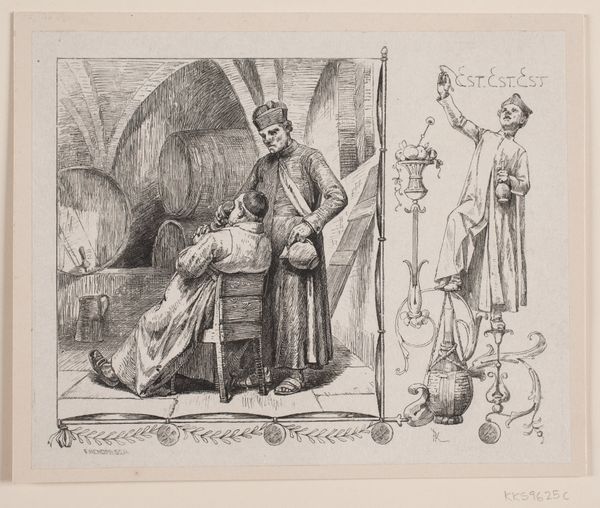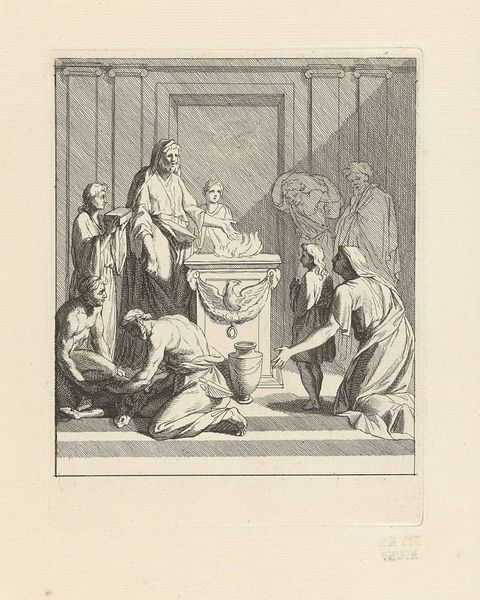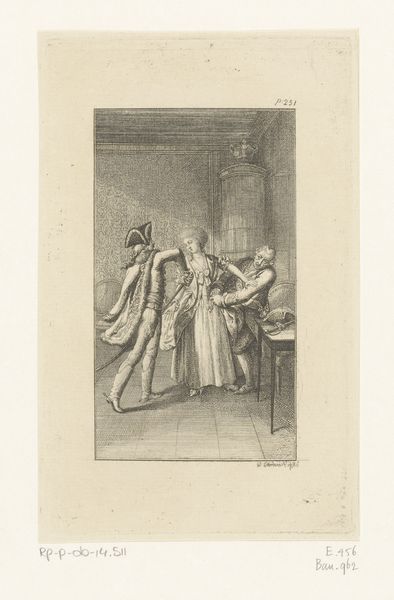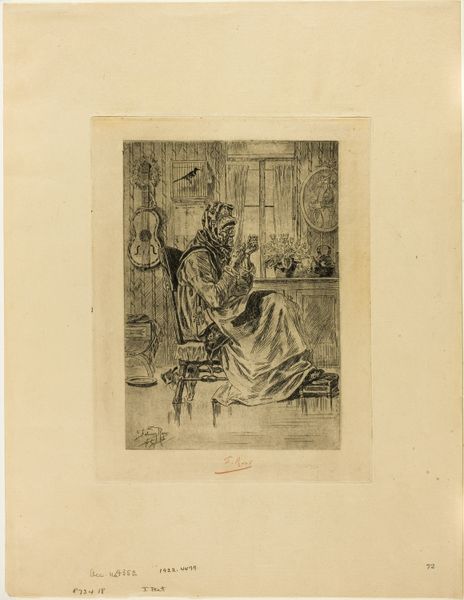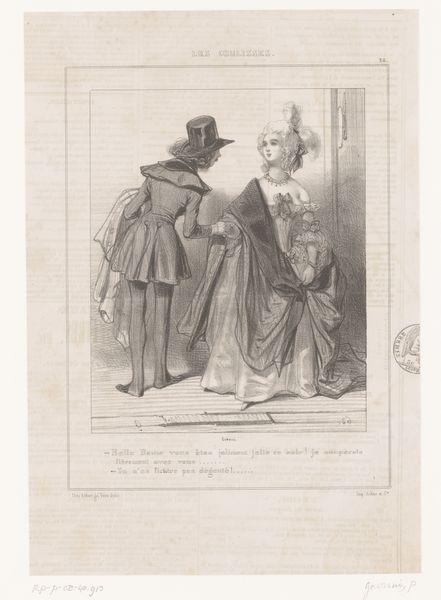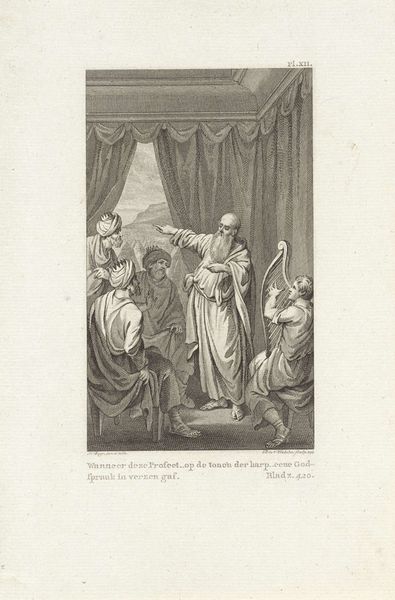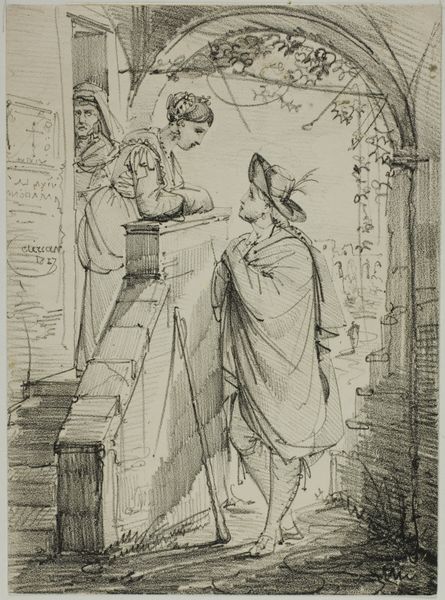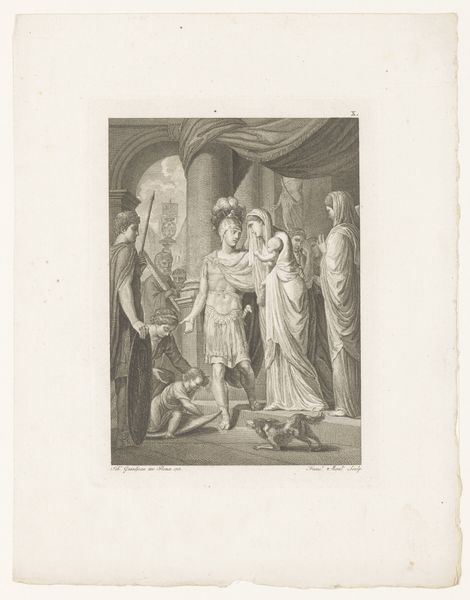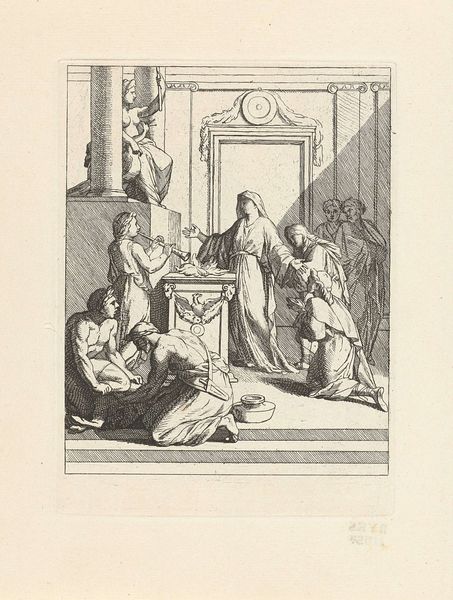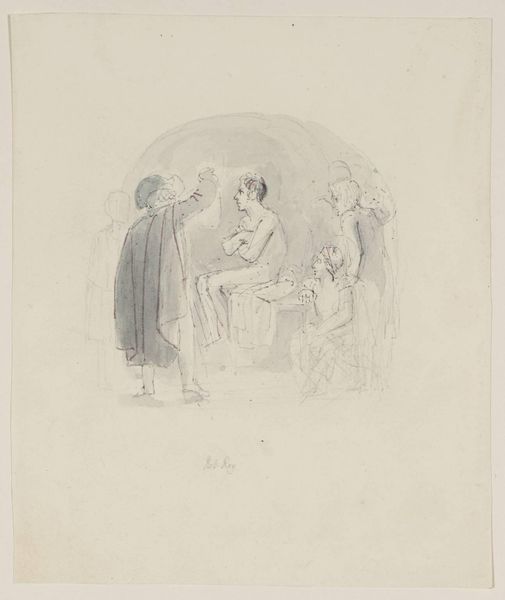
Apelles and Campaste. Aware that Apelles was wasting away with love Alexander gave him Campeste and above the first art deal ever now was struck girlfriend against sculpture, oh what luck! (From Art and the Antique, a poetic essay by M. Cavé), plate 36(37) from Histoire Ancienne Possibly 1842
0:00
0:00
drawing, lithograph, print, paper
#
drawing
#
lithograph
# print
#
caricature
#
figuration
#
paper
#
genre-painting
#
history-painting
Dimensions: 240 × 198 mm (image); 359 × 247 mm (sheet)
Copyright: Public Domain
Curator: This lithograph, tentatively dated to 1842, is by Honoré Daumier. The rather lengthy title is Apelles and Campaste. Aware that Apelles was wasting away with love Alexander gave him Campaste and above the first art deal ever now was struck girlfriend against sculpture, oh what luck! Editor: My first impression is one of subtle satire. It’s interesting how Daumier renders these historical figures in a way that almost feels... ordinary. Curator: It’s Daumier's signature, isn't it? To use historical and mythological subjects to comment on contemporary social issues. Here, he uses the anecdote of Apelles and Campaspe to talk about patronage and perhaps, even the commodification of art and relationships. The print form itself makes the artwork accessible and more widely distributed, a contrast to the elite circles depicted. Editor: I agree. The deliberate contrast in texture is striking. Look at the roughly sketched backdrop against the comparatively detailed rendering of Apelles' palette, a crucial piece of his trade. It underscores his status as a craftsman. There’s labor tied to the image itself. The way materials are shown feels pointed. Curator: Exactly. And think about the historical context: this print was made during a period of significant social and political upheaval in France. Daumier, through publications like "Le Charivari", was directly engaging with and commenting on the ruling classes, using humor as a form of critique. He questions those dynamics of power and who benefits from them. Editor: And Daumier highlights these themes in the very making, pushing the lithographic stone to reveal the societal undercurrents. His focus seems rooted in presenting the mechanics behind these relationships of influence, and how things get passed around materially and politically. The contrast feels extremely intentional and powerful. Curator: Absolutely, this artwork prompts us to consider the complex interplay between art, patronage, and personal relationships, which resonates as much today as it did in 19th-century France. Editor: The layers in the image invite us to think critically about who benefits from what we often understand to be artistic freedom and its conditions.
Comments
No comments
Be the first to comment and join the conversation on the ultimate creative platform.
